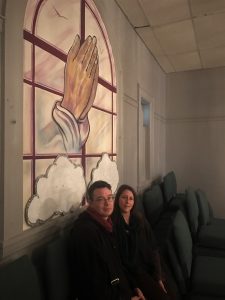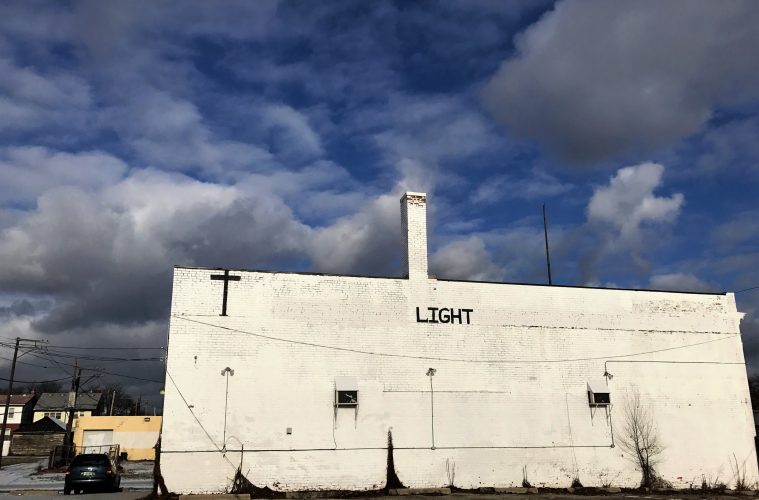By Gaia Klotz
“The use of the word community is really interesting,” Stefanie Cohen says to me, her head tilted at an angle as the light catches her long, beaded earrings and nose piercing, “and it’s also a really loaded term. I’m curious what community you’re really talking about: do you mean the city of Detroit, the immediate community, or us as a community of artists?”
We’re seated in the kitchen of the Light Box, a cup of rooibos tea is in my hands, and the music and movement of Billy Mark, the interdisciplinary artist in residence rehearsing up stairs, travels down to us like unconventional background music.
Stefanie continues to respond to my question about the Light Box’s engagement with the Detroit community, “these are questions we’ve had to hold and continue to hold since our beginning here.”

Corey Gearhart and Stephanie Cohen
In October 2014 Stefanie Cohen and Corey Gearhart assumed the roles of the co-owners, curators, and creators who opened the Light Box on Linwood street. The white painted facade of the building facing Pingree is demarcated with a single word written in black paint, “LIGHT”.
An old bank turned Baptist church turned artist-run space, the Light Box serves multiple functions. Local artists hold memberships and rehearse performances and incubate concepts, artists in residence live, work, and play in the space, educators teach classes that expand artistic voices and engage in skill-sharing, and the public is able to attend a wide range of performances, discussions, and social forums with the intent of shedding light on artistic processes. Performance at the Light Box is defined by both Corey and Stefanie “in the broadest way possible.”
The pair met seven years ago this February through the Ann Arbor Detroit Contact Improvisation group and currently collaborate as the Upended Teacups. Reflecting on the journey to Linwood street with Corey and Stefanie, through undergraduate and graduate studies and years of performance creation and curation in Chicago and Boston respectively, a sense of gratitude and balance emanates from both artists.
The main floor is open, expansive with a beautiful floor for movement that is overlooked by a painted picture of two hands clasped in prayer, a relic from the building’s former life. In the basement, the full baptismal bath has been converted to a shower, the ceilings hang low, and at the end of the hallway lies the church vault, guarded by two steel doors – one of the sites of Dorothy Melander-Dayton’s immersive performance piece this past year.
As I finish off my tea, I’m struck again by Stefanie’s answer to my question about community. In her answer, she explained the difficulty of straddling Detroit and Ann Arbor, raising kids, and the moment when she and Corey finally found a community and a home in Detroit: “it occurred to us that we didn’t need to wait ten years to start our lives over again; we could participate in a community here and have people and be a part of a place that inspires us.”

